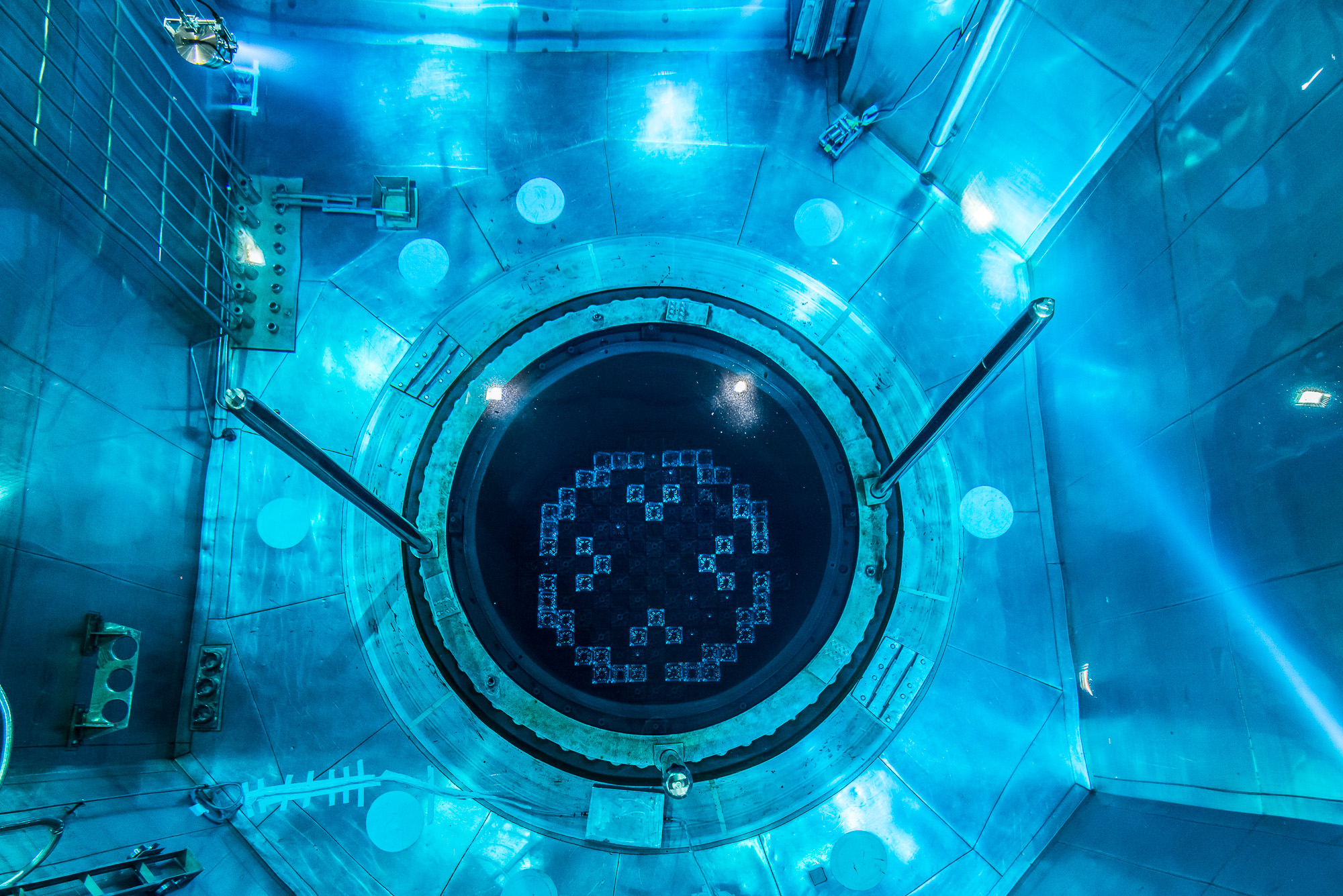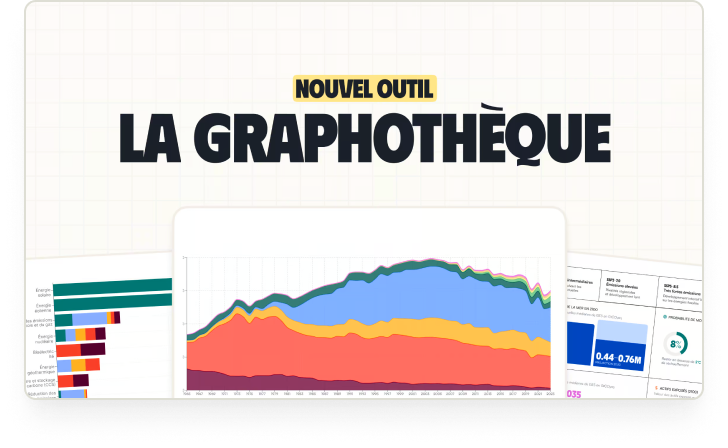“IPCC recommends nuclear power!”
People love to make the IPCC say anything and everything, especially about the role of nuclear power. Pro- and anti-nuclear people do not hesitate to cherry-pick: to take the information that suits them and communicate on it, without any context, without any perspective. So let’s try to get a clearer picture of what the IPCC is telling us about nuclear power. It is likely to be useful in the 2022 presidential debates…
Role of the IPCC
First of all, let us recall the role of the IPCC. What he says, what he doesn’t say, what he does, and what he doesn’t do. In addition to this article ‘Can we trust the IPCC‘, here are some key points to know:
- The IPCC does not conduct research, it reviews the state of knowledge based on scientific, technical and socio-economic literature.
- The IPCC does not develop scenarios or do modelling. These are activities of the international scientific community, coordinated by the World Cimate Research Programme (WCRP). It is therefore incorrect to speak of an “IPCC model” or “IPCC scenarios”. A common mistake made by politicians or NGO representatives on TV shows:

- The IPCC recommends NOTHING. It reviews the state of knowledge from the scientific, technical and socio-economic literature but does not recommend or advocate. The same goes for the way we eat (the IPCC does not recommend being vegetarian or vegan).
These clarifications are very important. I insist on this because I have probably already made the mistake myself through abuse of language. Let’s not give the IPCC a role it does not have: to do studies themselves, or to recommend X or Y. For the latter, it is the role of the politician to make such choices.
4 trajectories, one goal: limiting global warming to 1.5°C
Let us now delve into what the IPCC says in its Special Report 1.5 (SR15), which is most often cited in the debate. A small aside: there is a difference (less detail… and this is important, as we will see later) between what is written in the Summary for Policy Makers (110 pages) and the full report (630). It is always better to read primary sources and not summaries, where nuances, details and limitations can always be a source of misinterpretation or even miscommunication.
Below are four different mitigation strategies that could reduce the net emissions that would be needed to achieve a trajectory that limits global warming to 1.5°C with no or minimal overshoot:
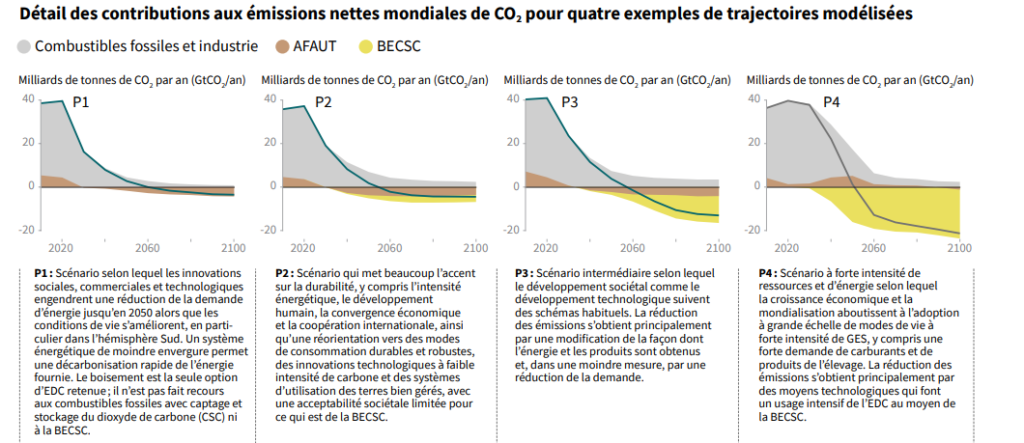
An important statement follows this graph, in box C.2.2: “In the 1.5°C no-exceedance or minimal-exceedance trajectories, renewables are projected to account for 70-85% (interquartile range) of electricity generation in 2050 (high confidence). Also for electricity generation, the share of nuclear power and fossil fuels with CO2 capture and storage (CCS) is modelled to increase in most 1.5°C trajectories with little or no overshoot“.
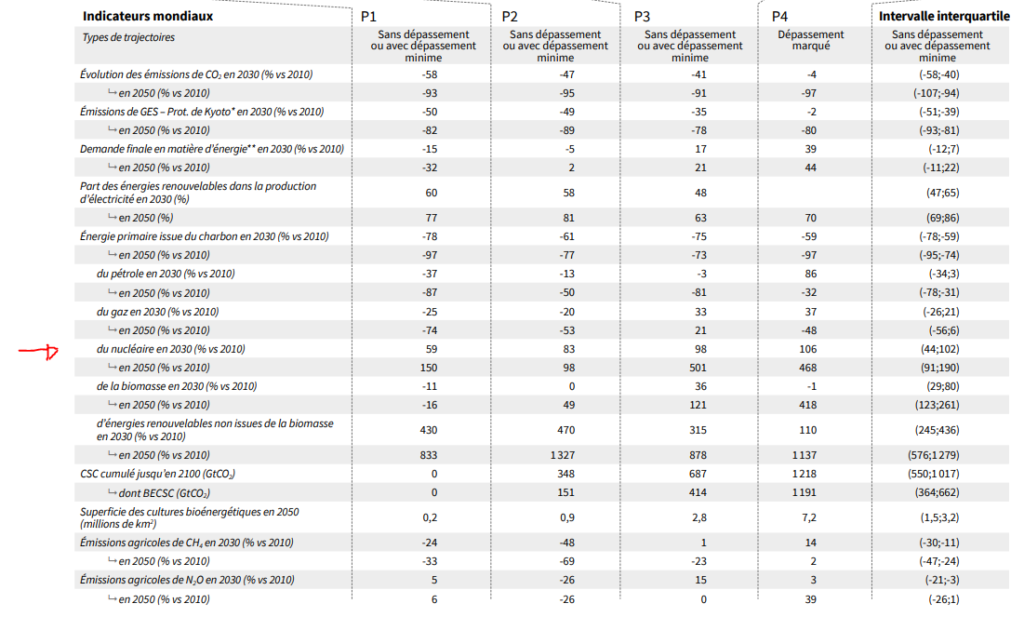
Indeed, according to the models, primary energy from nuclear power on a global scale is expected to increase in all four scenarios, from +59% to +106% in 2030 and from +150% to +468% in 2050, all compared to 2010, depending on the scenario studied (P1, P2, P3, P4)
Please note: you will notice that it says ‘most‘ scenarios. It is FALSE to say that ‘all scenarios predict an increase in nuclear power‘, as one often reads or hears. There are indeed scenarios where the share of nuclear power decreases. But for that, you have to go into detail in the full report, page 131 of the report:
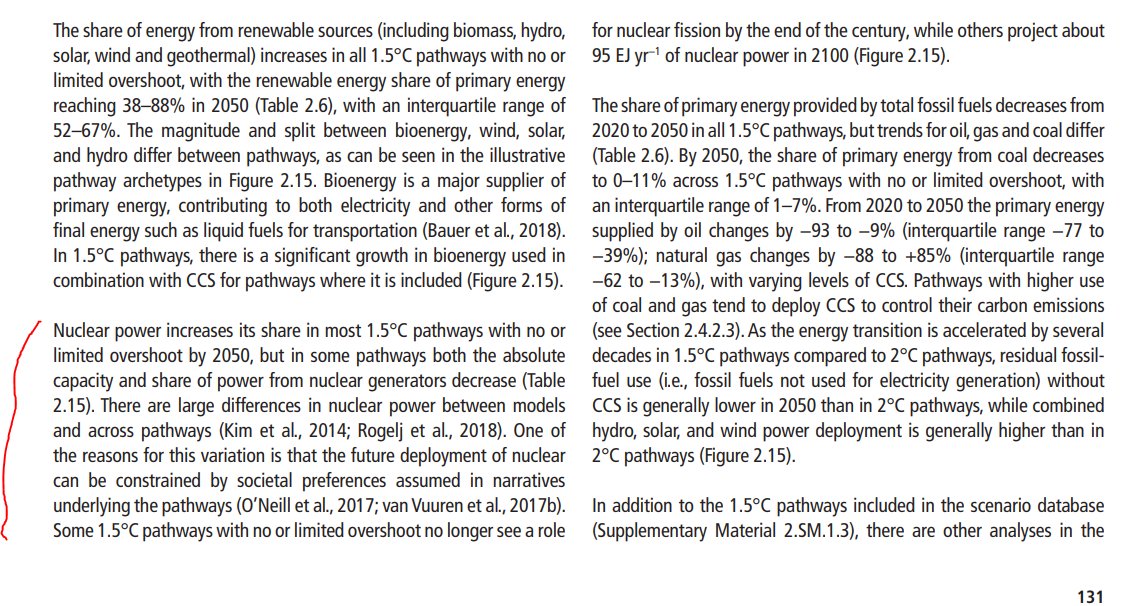
Also, the progression of nuclear power is often highlighted in the scenarios. But let’s not forget two things. Firstly, this progression is different according to geography. For example, this progression is lower in the OECD than at the global level (difficult to make it progress in France, for example, where it is already 70% of the French electricity park). Secondly, this share remains (very) small in the world electricity mix in most scenarios:
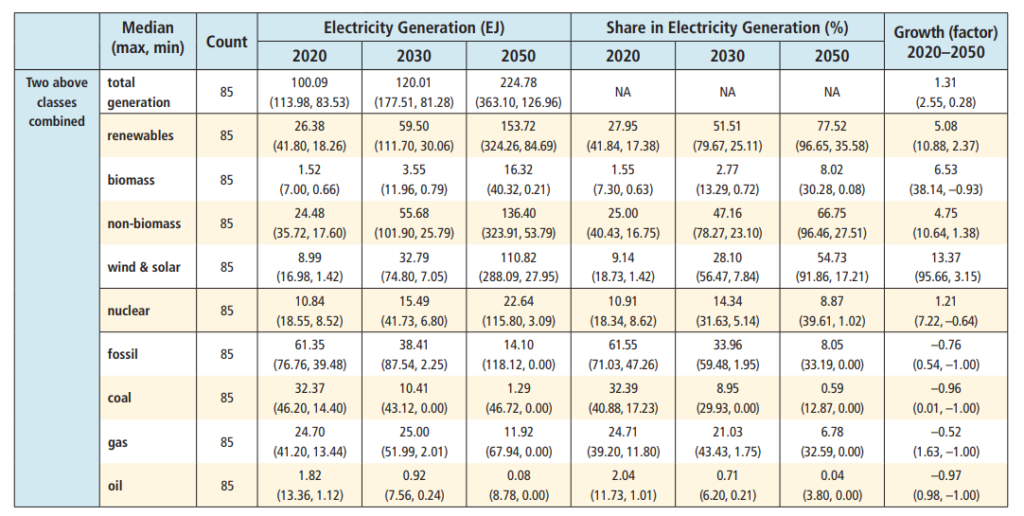
Why will it be difficult for nuclear power to exceed 20-25% of the global electricity mix? This is explained in the paragraph below.
NEWSLETTER
Chaque vendredi, recevez un condensé de la semaine, des infographies, nos recos culturelles et des exclusivités.
ALERTE
Une alerte dans votre boite mail, pour être mis au courant dès qu’un nouvel article est en ligne sur Bon Pote
Nuclear power: yes, but not for everyone
The political processes triggered by societal concerns depend on each country’s capacity to manage the debates around technological choices and their environmental impacts. Such differences in perception explain why the 2011 Fukushima incident led to a confirmation or acceleration of the phase-out of nuclear power in five countries (Roh, 2017) while 30 others continued to use nuclear power, of which 13 are building new nuclear capacity, including China, India and the UK (Yuan et al., 2017).
The table below assesses the feasibility of examples of mitigation options relevant to the 1.5°C temperature increase. Dark shading means that there is no obstacle in the feasibility. The IPCC considers 6 criteria: Economic (Ec)- Technological (Tec) – Institutional (Inst) – Socio-cultural (Soc)- Environmental/Ecological (Env)- Geophysical (Geo).
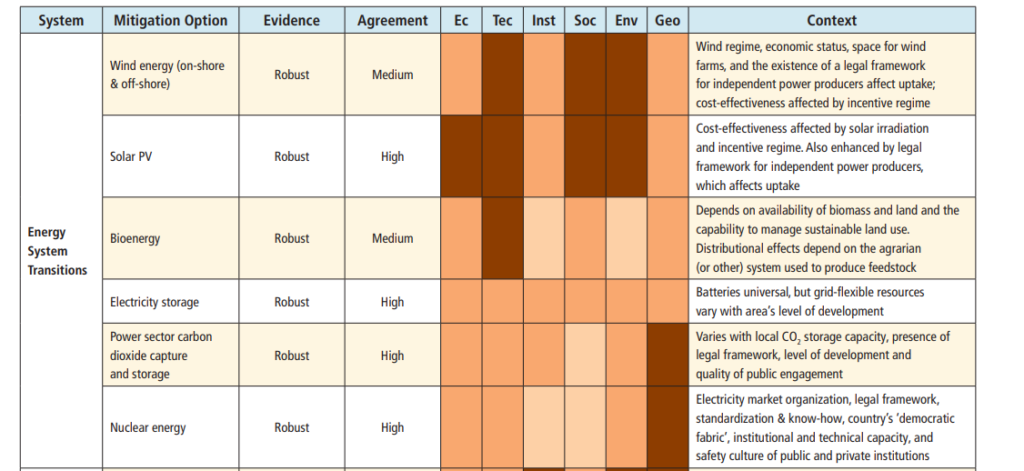
Given the criteria, it is clear that nuclear power is not possible in all countries and that there are demanding prerequisites if one wishes to develop a nuclear fleet or simply maintain the existing one. It is therefore possible in an environment like France, but more complicated in very politically and geopolitically unstable countries.
I am ignoring the term ‘democratic fabric‘ in the table, which occurs only once in the 630 pages. A bit surprising if we take a step back from some of the countries that are developing nuclear power, such as the beautiful democracy that is China.
The limitations of the scenarios presented by the IPCC
This last part should put what you have just read into perspective.
The IPCC synthesises the results, which depend on the scientific publications, the postulates of the scientists. It is essential to insist on this point. Prospective is not neutral. What does this mean? This means that the results of your models will depend on what you assume.
A more detailed analysis shows that :
- These are 2 models that seem to push for a strong increase in nuclear (GCAM & MESSAGE).
- The comparison of nuclear power between the SR15 scenarios is not really a uniform sample of assumptions, models, etc. In contrast, the shared socio-economic scenarios (SSP) allow for a much more consistent comparison:

Data : https://tntcat.iiasa.ac.at/SspDb/dsd?Action=htmlpage&page=about
- The IPCC is neither FOR nor AGAINST nuclear power. This depends on the models. And to understand why some models like nuclear power and others don’t, you have to delve into the workings of each model… Which of course 99.9% of IPCC+nuclear commentators have never done.
- All scenarios in Special Report 1.5 are based on :
- a (too) large share of negative emissions
- utopian technological advances that are slow to materialise
- A GDP INCREASE Do you know what this means in relation to the climate targets? A beautiful global green growth! (If you want to understand why it is dangerous to rely on green growth to address climate issues, read this article).
Finally, perspectives from other knowledge systems, practitioners or indigenous peoples are under-represented in IPCC assessments (Ford et al., 2016). If the IPCC were to synthesise the work by taking more account of the experience of indigenous peoples to limit warming to 1.5, it is not certain that nuclear power would be their first choice.

Source : SR15
The last word
If you thought you understood everything after reading a 30-page summary, you didn’t understand anything. It certainly takes several years of experience to have the necessary hindsight to understand the workings of the models and the conclusions. However, a few dozen hours can be enough to understand the main points: the objective of limiting to 1.5°C, the role of the IPCC, its synthesis work, and how to interpret data.
Conclusion of this article:
- No, the IPCC does not recommend anything
- The IPCC does not make models
- Le GIEC n’est ni POUR ni CONTRE l’énergie nucléaire. It depends on the modelsthe assumptions
- It is for politicians to say how to achieve X or Y type of society, by recommending and taking decisions. Not the IPCC.
Thumbnail: Cherenkov effect (credit)

